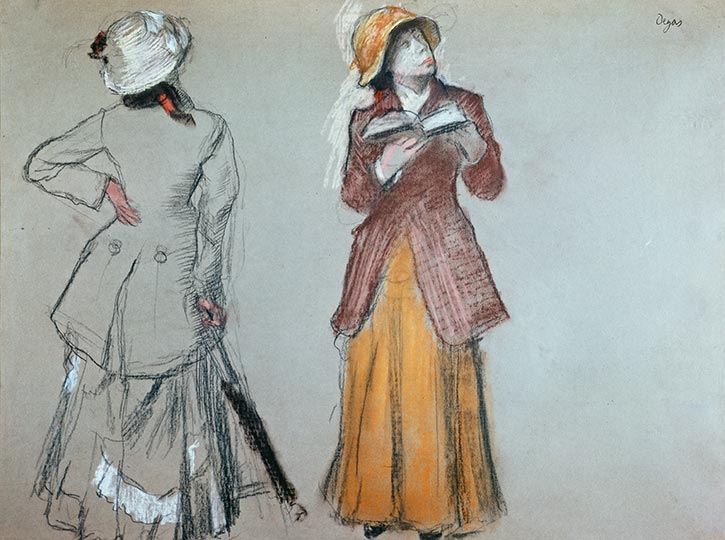But Edgar and Mary were more than that. (And how quickly we assume that this meant they were lovers! Appreciation to the Gallery for not making the assumption.) This was more than a friendly smile when they bumped into each other at an after party. They sharpened each other, challenged and spurred one another to new techniques and studies, never letting the other rest on their rising acclaim and laurels.
Even this I think I understand until a simple piece--sketches with a touch of color--catches my eye, and through such a tiny window I can suddenly see them. The Gallery's high walls are dwarfed as I recreate the Louvre around me, with paintings larger than the side of a house, horses twice the size of life. "Two Studies of Mary Cassatt at the Louvre" (1879) should, by rights, be unremarkable. It doesn't seem to have been worked on or polished, and had her name not been affixed to it, it might well have faded out of keeping. But in such a quick sketch, a wide swath of light falls across how they inspired each other.
You can love something more by watching someone else love it, and that's what I see here: Mary's peering, her gazing, her studying, her note-taking, requires Edgar to capture her being caught up. I'm comfortable in being sure he didn't necessarily show this to her, either--that the point was to keep this in his studio, to pull it out occasionally and ask, "What would Mary see in this?"
I love how ordinary this is. How normal, how non-glamorous, how unarrogant. Degas was and is the bigger deal in most circles, but he saw something to be echoed in Mary Cassatt--his friend.

No comments:
Post a Comment